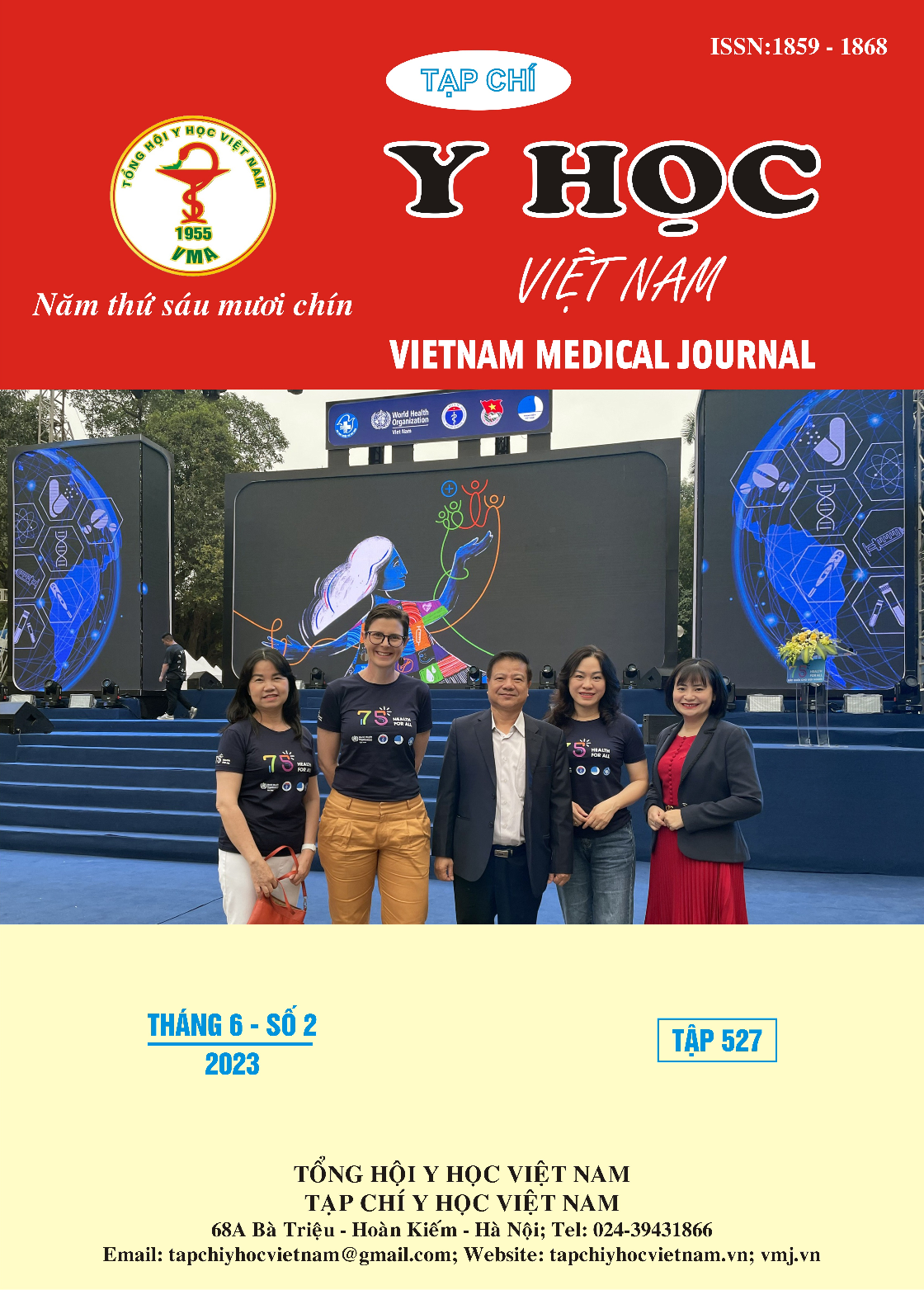RESULT OF LIVING DONOR LIVER TRANSPLANTATION TREATMENT BILIARY ATRESIA IN CHILDREN AT THEVIET NAM NATIONAL CHILDREN’S HOSPITAL
Main Article Content
Abstract
Background: Biliary atresia is the most common indication for liver transplantation in children. Aims: To evaluate the results of living donor liver transplantation treatment biliary atresia in children at Viet Nam National Children’s Hospital. Materials and Methods: A retrospective review early and mid-term outcome of 22 patients with biliary atresia were peformed living donor transplantation from July 2018 to November 2022. Results: There were 22 living donor liver transplantation cases were performed in National Children Hospital, 10 male (45,5%) and 12 female (54,5%). The median age at operation was 29,5 months (8 months old to 14 years old). The median body weight was 10,0 kg (7,5kg to 26kg). The left lateral segments were used in 20 cases (91%), right lobe were used in 2 cases (9%). There are 9 cases (40,9%) were performed with ABO blood group incompatibility. No donor complication was encountered. Intra-abdominal bleeding (4 cases, 18,2%), hepatic vein stenosis (4 cases, 18,2%), prolong chylous ascites (5 cases, 22,7%), hepatic artery thrombosis (1 case, 4,5%), intestinal perforation (1 case, 4,5%), 1 case (4,5%) died in post operation day 1 because of coagulation disorders, 1 case (4,5%) died after 3 months because of severe infection progress. Conclusion: Liver transplantation in our center provides encouraging outcomes for pediatric recipients with biliary atresia with the good result 3-years patient survival rate of 88,1%
Article Details
Keywords
Living donor liver transplantation, pediatric liver transplantation, biliary atresia.
References
2. Sundaram S.S., Mack C.L., et al. (2017). Biliary atresia: Indications and timing of liver transplantation and optimization of pretransplant care. Liver Transpl, 23(1), 96–109.
3. Swenson S.M., Roberts J.P., et al. (2019). Impact of the Pediatric End-Stage Liver Disease (PELD) growth failure thresholds on mortality among pediatric liver transplant candidates. American Journal of Transplantation, 19(12), 3308–3318.
4. Tambucci R., de Magnée C., et al. (2021). Sequential Treatment of Biliary Atresia With Kasai Hepatoportoenterostomy and Liver Transplantation: Benefits, Risks, and Outcome in 393 Children. Front Pediatr, 9, 697581.
5. Zhu J.-J., Xia Q., et al. (2012). Living donor liver transplantation in 43 children with biliary atresia: a single-center experience from the mainland of China. Hepatobiliary & Pancreatic Diseases International, 11(3), 250–255.
6. Cortes-Cerisuelo M., Boumpoureka C., et al. (2021). Liver Transplantation for Biliary Atresia in Adulthood: Single-Centre Surgical Experience. JCM, 10(21), 4969.
7. Qiao G., Li L., et al. (2015). Conditional probability of survival in patients with biliary atresia after Kasai portoenterostomy: a Chinese population-based study. Journal of Pediatric Surgery, 50(8), 1310–1315.
8. Caglar C., Arif M., et al. (2016). Hepatopulmonary Syndrome and Liver Transplantation: A Recent Review of the Literature. JCTH, 4(1), 47–53.
9. Kasahara M., Umeshita K., et al. (2018). Living donor liver transplantation for biliary atresia: An analysis of 2085 cases in the registry of the Japanese Liver Transplantation Society. American Journal of Transplantation, 18(3), 659–668.


